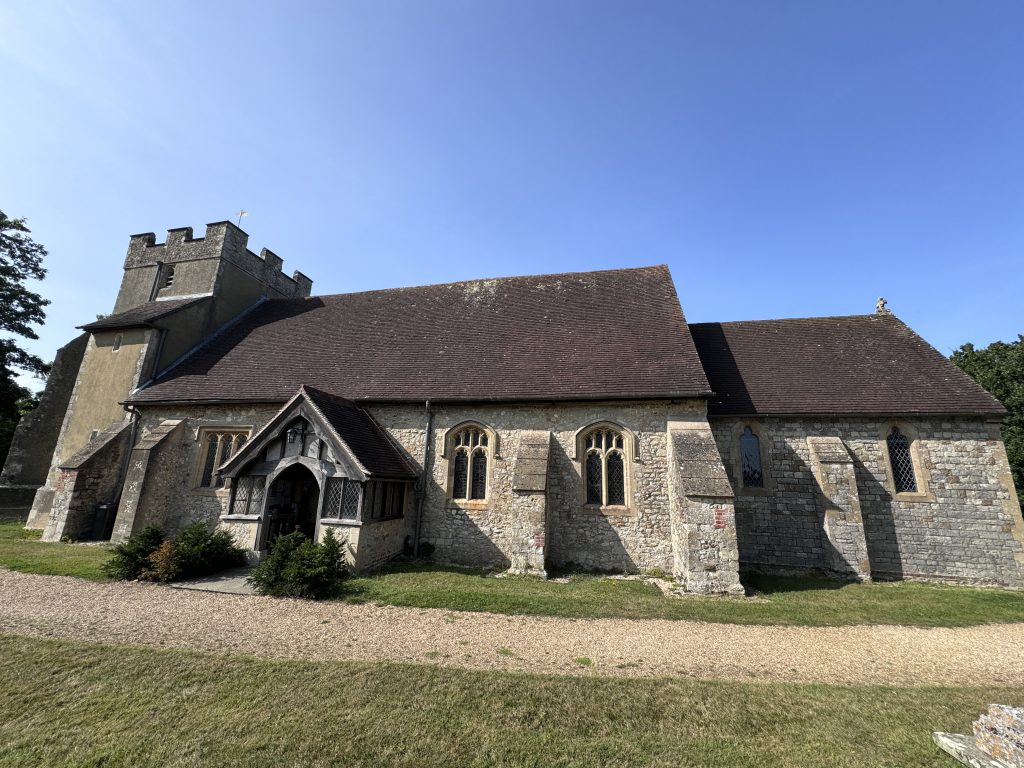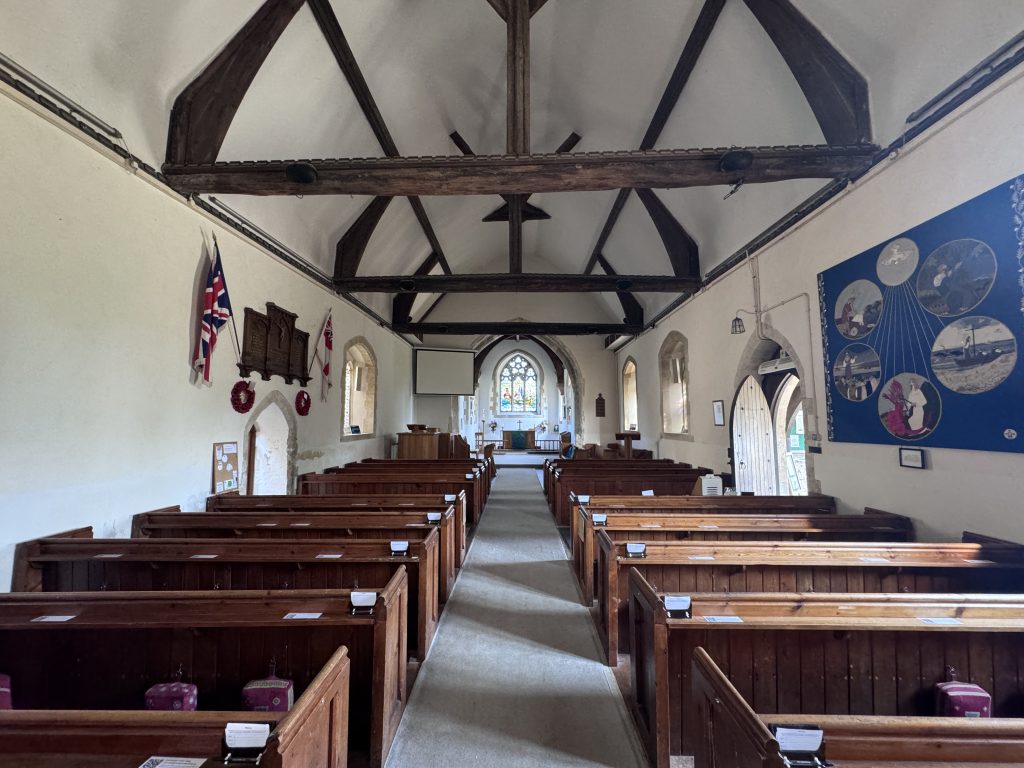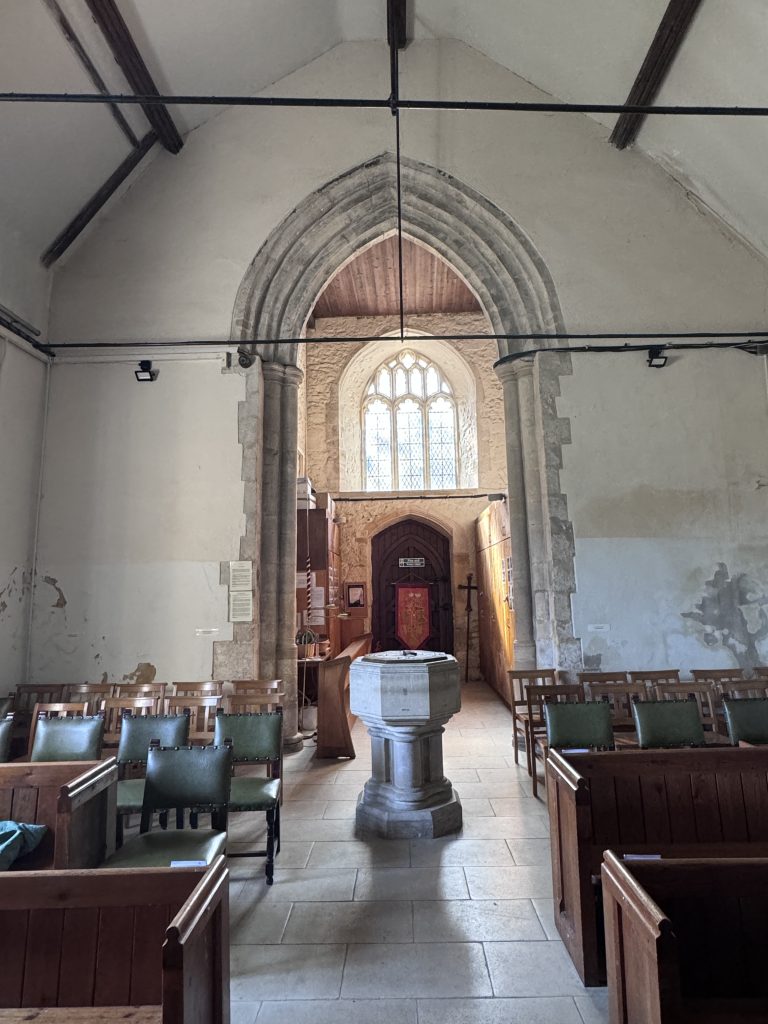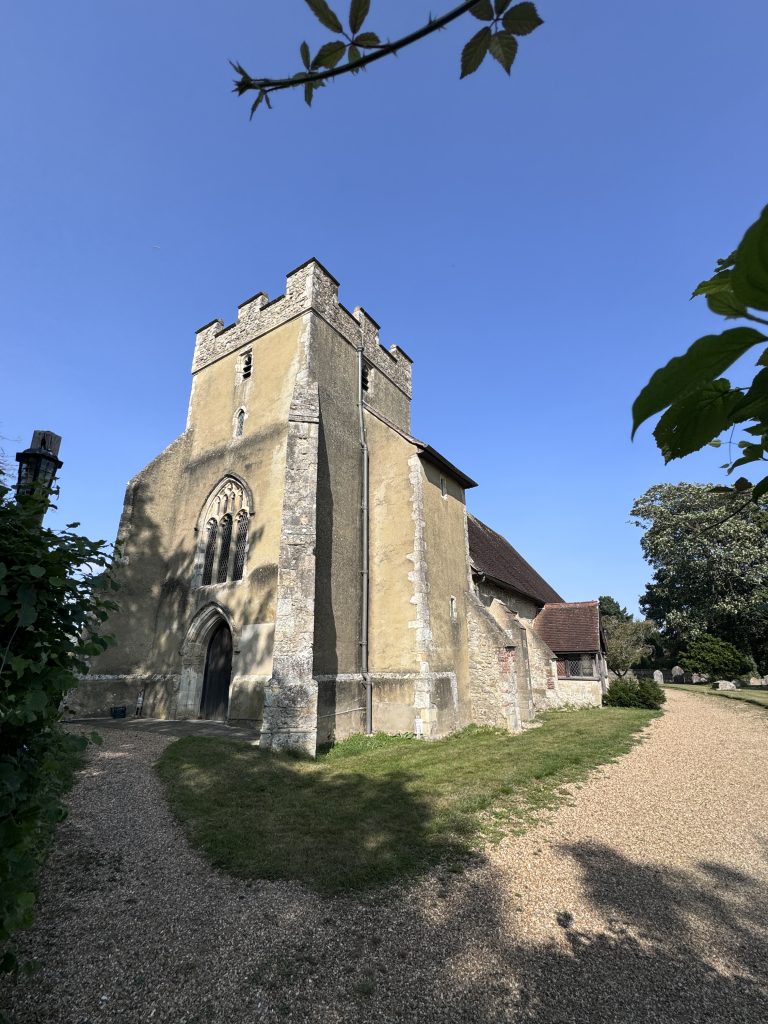Yesterday we visited the pretty parish church of Birdham in West Sussex. We were camping in the area and I remembered we had a connection with Birdham which is just outside of Chichester.
The parish church was dedicated to St Leonard until about 1900 but is now dedicated to St James. In June 1827 Thomas Mansel married Selina Leigh, witnessed by Catherine Elizabeth Mansel (some relation to Thomas Mansel) and Benjamin Leigh (brides’ father).
Fortunately the church was open so I was able to go inside.

The 14th century nave.


The 16th century West Tower.

It is a very pretty church and I was happy to be able to go inside.
On the 24th November 1829 there is a baptism entry for their daughter Alexina Mansell. Unfortunately her mother Selina Mansel died shortly after, an entry of burial for her exists in the register for Newchurch of the Isle of Wight on the 3rd December 1829, stating place on death at Birdham, Sussex. There is no entry of death for Alexina Mansel but as there is no further record of her I presume she also died around this time.
I’m not sure what would have brought the family to Birdham. Thomas Mansel had his occupation listed as Commander Royal Navy in 1829.





